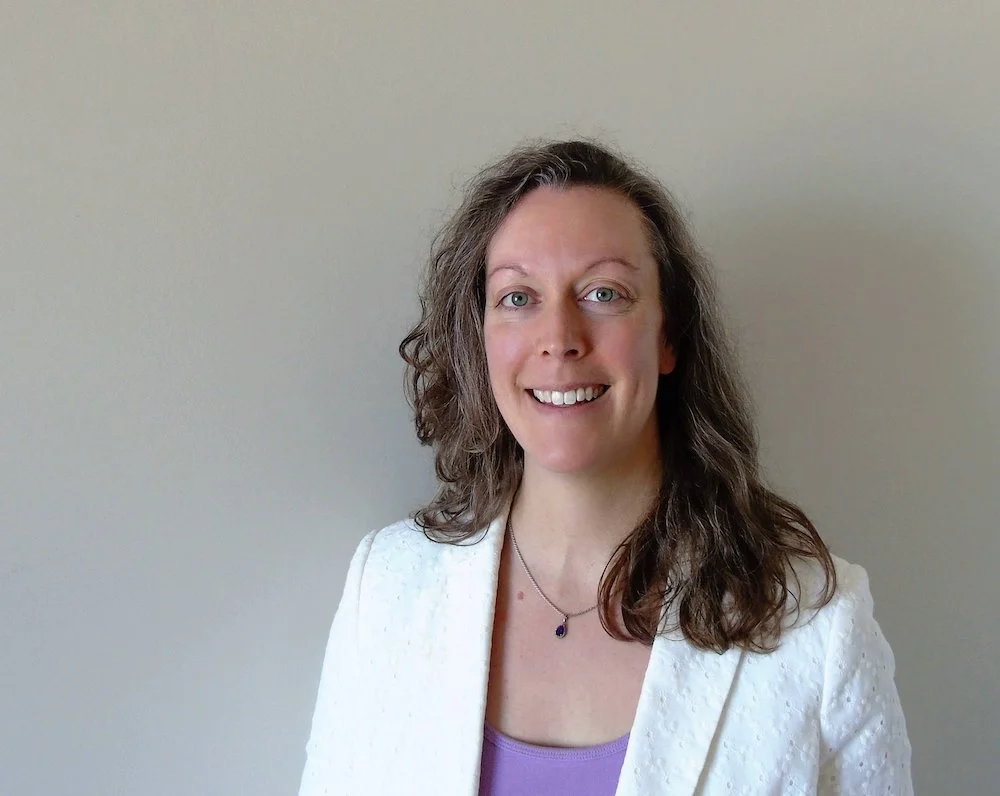Coffee Chat with Pauline Shen
Pour yourself a nice steaming cup and settle in to get to know Pauline Shen a little better.
Tell us a bit about yourself.
I love paper and stationery supplies! There’s something so pleasing about folding a letter or card into an envelope and feeding it into the mail slot. I have a drawer stuffed with greeting cards ready to send at a moment’s notice—birthday, holiday, gratitude, etc. When I’m out and I see something that catches my eye, I pick it up. Doesn’t matter if the next family birthday isn’t for months! I’m always ready to send a bit of mail to a friend or relative with some inspirational words or a fun doodle. Tangible trumps virtual every time.
How do you take your coffee? Organic with lots of cream and made with spring water. My husband and I take turns brewing it in our French press each morning. The key ingredient is a dash of cinnamon.
What Blank Spaces issue were you first published in? Volume 6, Issue 2, December 2021. Flash fiction, “Eighteen Ninety-Seven.” It’s a micro fiction piece that I wrote after sifting through historical documents that outlined my ancestors’ experience coming to the New World and settling in the West.
When did you first know you wanted to write? When I was in my Barbie doll playing years, I would convert our front parlour into a mini town for my dolls. Tables, bookshelves, and other furnishings served as restaurants, fancy apartment buildings, and so forth. One crucial stop along the main strip was a laundry basket turned public library. (What town is complete without one of those?) The holes running up the sides of the basket served as cathedral-like windows for ample reading light, of course. Inside were stacks of miniature books that I made by fastening cut-up lined paper and blank recipe cards together. I’d adorn each cover with a title, detailed sketch, and a sticker on the back to serve as the official publisher’s seal. Every “novel” in that library was written by the same author—guess who?
What role has Blank Spaces played in your creative journey? I began reading Blank Spaces a few years ago and found encouragement by what I saw. I am impressed by its colourful and vibrant nature. What I admire most is the commitment to supporting Canadian writing while remaining independently funded. This makes for a neutral environment that encourages developing artists to explore a variety of topics and styles in an open and honest way. The result is a tapestry of creative pieces from hard-working and talented individuals. Seeing this gave me hope as a new writer. I first tried my hand at the write-prompt challenge and eventually submitted additional writing and visual art along the way. The editor offers personalized letters of acceptance as well as feedback when a piece must be declined. That personal touch makes Blank Spaces a true community, not just another magazine.
What does your writing process look like? This is a great question because I’ve shifted my working style with gained experience. I used to be a scraps-of-paper type of scattered mind. When I sat down at the computer, there would be a jumble of jots, outlines, and diagrams strewn across my desk. I always had half-composed paragraphs and scribbles in a notebook lying around. I never really started with a blank page. At the time, this seemed like a smart idea. Ultimately, it often led to procrastination, “filing away,” and a string of semi-completed projects piled in my home office. My strongest work, however, came from times where I spontaneously wrote something down on a blank page and stuck with that one thing until complete.
Now I follow simple advice that came from an interview with John Cleese, where he said, “Just sit there!” I begin with a blank page. And I sit. And wait. And think nothing. Everything required to write a good initial draft comes through me. This style requires patience. If you are feeling hurried and impatient, then you’re not really giving it your full attention anyhow. Your work will reflect greater depth when you surrender your own grip on where it’s going. After all, it is not for you; it’s for your audience. I don’t write for my own self-satisfaction. It is work.
Once an initial draft is complete, the process involves conducting research (for finer details) and the repetitive job of editing. The key is to let the piece rest for a while after the last revision so I can come back to it with fresh eyes and a detached attitude. The piece is ready for feedback from others when every voice (narrator, protagonist, etc.) within it is no longer just a version of my own—each has become unique. When I feel comfortable allowing someone hear me read it aloud, then I know the piece is ready to submit for publication consideration.
If you could tell your young creative self anything, what would it be? This kind of question is a trap of sorts. Logically, we know that there is no possibility of going back in time. And if you could, would your younger self listen to the advice you have to offer? Would you really stop at just giving a single piece of advice? So then you get lost in your mind, backtracking through your past decisions and searching for details that you hadn’t noticed before. As if there was some way to alter your present situation. There’s no way out of that. You’ll end up in a state of self-hypnosis. Deception. So, here’s what a question like this boils down to: Don’t waste your life pursuing a fool’s errand. No one can go back. Not me. Not you. That doesn’t mean you can’t take steps now to improve your future. If you’ve lost your way, take heart in knowing that you always have the choice to get back on track. Just don’t wait too long.
What advice do you have for writers struggling to break into the industry?
1. WRITE. Firstly, I’ve found there are two types of writers: talkers and doers. You need to be a doer—that means WRITE. The first thing you’ll get asked once you tell people that you’re a writer is some variation of, “what have you written?” If you’ve got lots of ideas rattling in your head but nothing to show (all flash, no cash), then you’ve got work to do. A writer writes. It’s that simple (but not easy).
2. READ. Secondly, you need to know where your work will fit. Devote some time to reading current literary magazines and websites. Now wait… there are bazillions! So, to avoid being overwhelmed I’ve developed a system. It goes like this:
a) Begin with one current literary magazine (i.e., the current issue of Blank Spaces). READ each piece with your full attention. Take notice of anything that resonates deeply with you—character, plot, narrative style, imagery, etc. Bookmark that page.
b) After reading the whole magazine, turn back to your bookmarked sections. Decide exactly what it was that resonated with you for each. Whatever resonates the strongest with you is something that you can and should incorporate in your writing technique. You’ll need to reflect within yourself to determine what that might look like.
c) Now for each piece you’ve bookmarked, read the author bio. Pay attention to where this author has been published. If the author has a website, scope it out.
d) Peruse the websites for the additional magazines where this author is published. Try to obtain a copy of the most recent issue.
e) Repeat process.
Eventually, you will develop a set of favourite magazines. I recommend following them for a few issues to get a sense of the content. This will take some time, but you’ve got time since you’re working on writing in the meanwhile and building up your portfolio of work, right?
Begin reading magazine submission guidelines to become familiar with the process. Each managing editor has a different set of preferences. But, overall, the process is fairly uniform. It boils down to this: your work won’t get published unless you actually SEND it out there! This leads me to my third point.
3. SEND. Look, here’s a great way to get started: enter a writing contest. Depending on the writing contest, you can make great strides by entering your work. Here’s what I mean:
a. Reading your submission. If you submit your work to a writing contest, it means that someone on the judging panel must read it in a timely manner. Even if your work doesn’t win or place, you’ll gain the satisfaction that your work isn’t being returned to you unread after sitting in a slush pile for months (or years!). Most magazines send a letter to update you as to whether your entry has made it to the next round or not.
b. Feedback for your submission. Lots of writing contests offer feedback. Again, it guarantees that someone on the judging panel must read your work thoroughly enough to offer constructive criticism of the piece. I have found this to be a useful part of the writing-for-publication process. Many of my pieces received professional feedback in this way and led to huge improvements (and later publication!) even without winning the actual contest.
c. Bonus subscription or access. The submission fee for a writing contest is usually part of a subscription drive for the literary journal. If you’re considering a subscription to a particular magazine, wait until the next contest and you can get both benefits in one transaction.
d. Getting your name (& work) out there! Winning the contest would be awesome. You know what’s also great? Being shortlisted or longlisted. You know what’s the real win? That you’ve put your name and your work “out there.” Part of the writing-for-publication process is marketing. You need to look for ways to get yourself known. But you’re not going to get published at all if you don’t SEND your work out. Writing contests are just a good way to start, but it’s not the only way to submit for publication. The process becomes second nature after a while—don’t sweat it.
4. Consider your WHY. This phrase is often repeated in writers’ workshops and classes, but it seems to me that budding writers don’t really hear it. Listen, your work is going to get rejection letters, criticism, and fallout from peers. That’s a fact. If you don’t have a reason WHY you’re pursuing this venture, then there are ample enough obstacles to knock you down. Consider from where your strength is coming. If you are choosing to be a writer simply for an excuse to sip tea in your pyjamas all day long, then how solid will your resolve be when you start getting pushback? Consider your WHY.
What are you currently working on? I’ve always had an interest in all forms of creative expression. If I get into a block phase, then I move to an alternative mode of storytelling. Last year, I pulled back on my writing time and devoted my attention to visual art. I’ve been studying a range of painters and practising some of their techniques on my own. Watercolour painting struck a chord with me. The practice of negative painting (a technical term) has somehow been inspirational for my writing. I’ve veered into nonfiction territory and am working on essay & memoir. I also sent artwork out for consideration and have been getting positive results. You can look for my visual art and photography now out in a variety of publications.
If you’re a past Blank Spaces contributor and would like to be featured in a virtual coffee chat, please complete our online interview form.
Learn more about Pauline’s work that has been featured in Blank Spaces here.



